You’ve probably heard of product documentation and knowledge bases. In fact, you might even use the two terms interchangeably since most assume they mean the same thing.
After all, both repositories provide articles detailing and explaining software products and are, in a way, a type of software documentation. Isn’t that all there is to it?
Well, not necessarily.
Although the two concepts are incredibly similar, they’re not synonymous. A knowledge base article wouldn’t necessarily be considered part of product documentation, and vice versa.
To find out more, keep reading—we’ll explain the key differences between product documentation and knowledge bases.
What Is Product Documentation
Product documentation is perhaps the most helpful resource you could provide in conjunction with your software product.
These documents outline every software feature and function, making a comprehensive, inclusive guide to your product.
Such documentation is a treasure trove of information; if you ever need to understand a software functionality better, your best bet is product documentation.
These texts are hugely helpful, as finding information is becoming more and more challenging. Just look at the statistics:
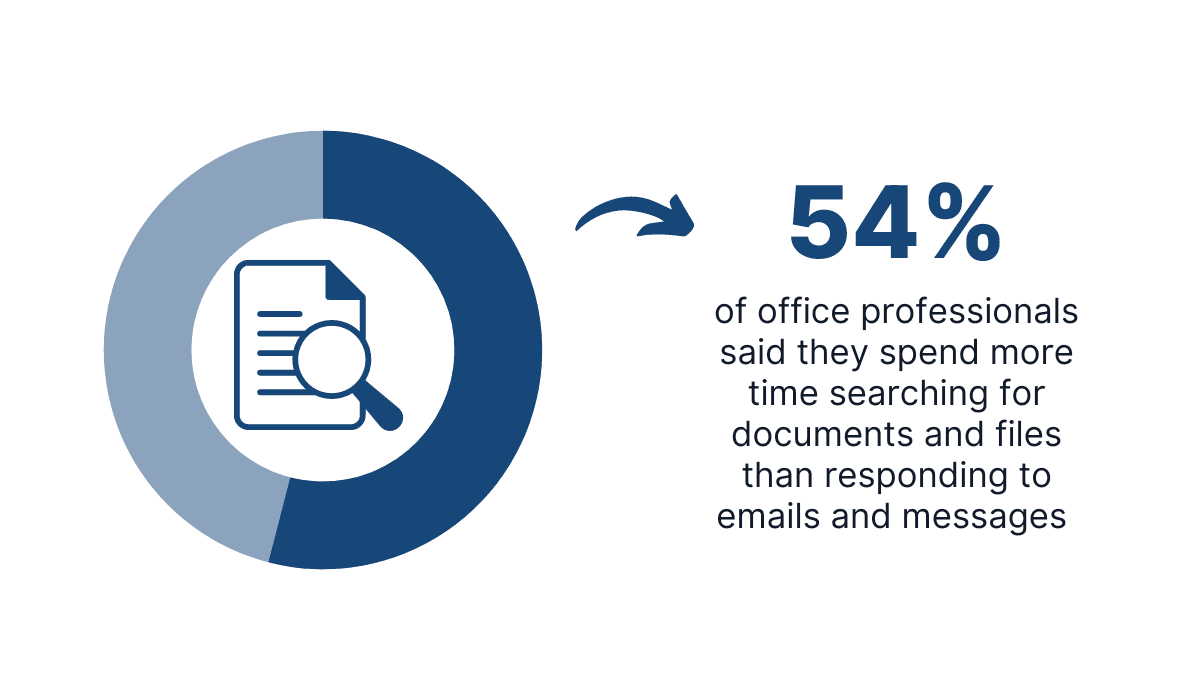
Illustration: Archbee / Source: elastic
More than half of office professionals spend quite a substantial part of their workday searching for information.
However, with well-written product documentation, your employees shouldn’t have such issues, as all intelligence will be found in one centralized location.
Consider this Cisco documentation:
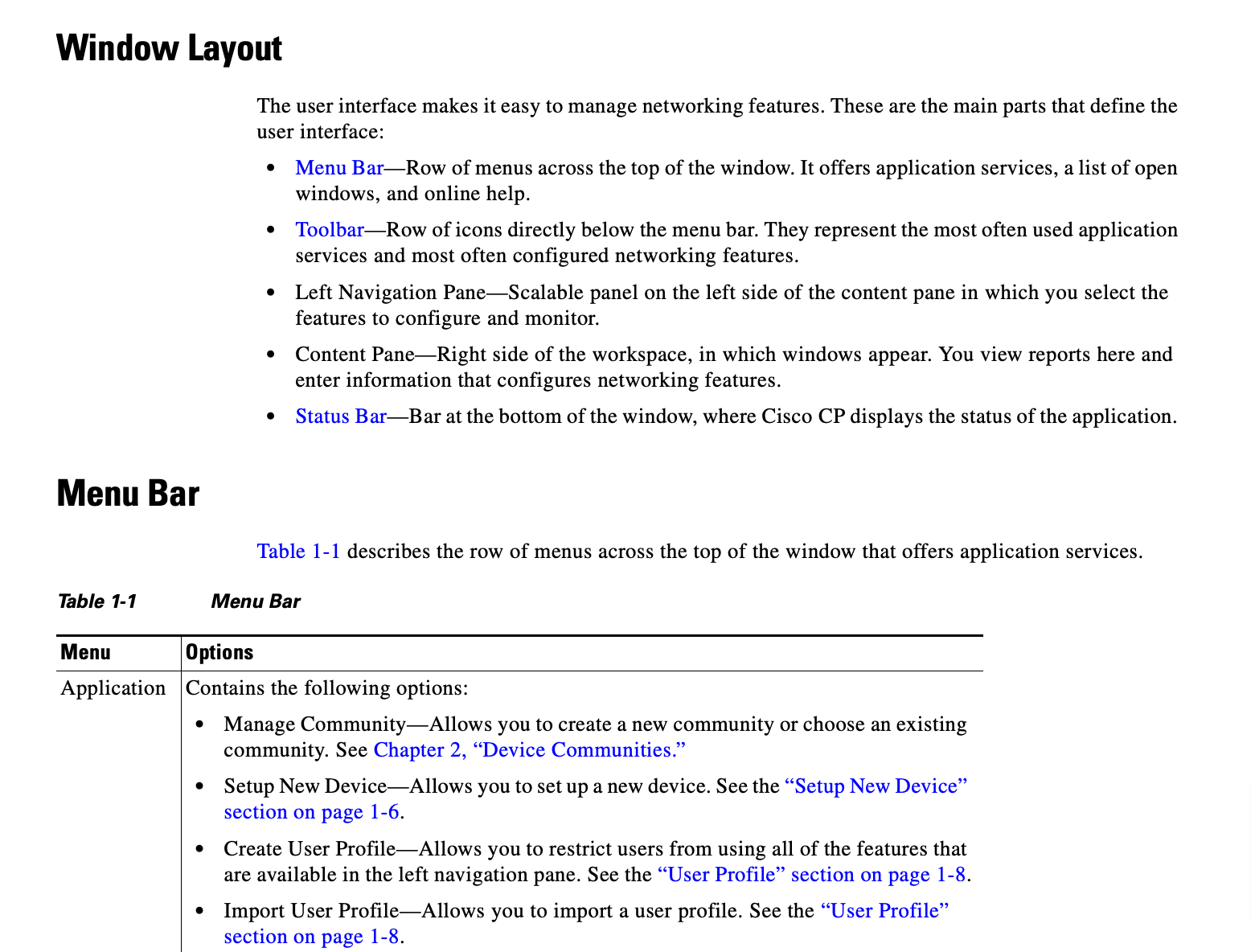
Source: Cisco
Let’s say you’re using Cisco’s Configuration Professional for the first time, and aren’t sure how to navigate the product.
Your best bet is to consult the product documentation, as these articles will provide a comprehensive explanation of all its features.
Furthermore, if you’re interested in a specific Cisco feature, you can easily find it, as they’re all listed in a table of contents at the beginning of the documentation.
Take a look:

Source: Cisco
With this overview, you can quickly locate content that interests you.
This Cisco text is an excellent example of user product documentation—documents aimed at end-users to help them use your software more efficiently.
These texts serve as manuals and, as such, are freely available.
When we look at types of product documentation, we can roughly divide them into two categories, displayed below:

Source: Archbee
System product documentation contains confidential information such as software architecture, source code, and design choices.
As such, this is highly technical documentation typically reserved for an internal audience.
Here are some examples of system product documentation:
- Product requirements document
- Technical architecture
- Test documentation
- Source code
- Product roadmap
As you can see, these documents are all concerned with the inner workings of the software product and, therefore, cover a technical subject matter.
They deal with the software’s conception and build.
User product documentation, on the other hand, attends to software’s outward functionalities, teaching individuals how to utilize the product.
Here are some examples:
- Quick start guide
- User manual
- Installation manual
- Troubleshooting manual
- Release notes
- Case studies
- White papers
- Datasheets
You’ll notice a pattern: words such as manual and guide are relatively common. That’s because these texts are all written to educate users and provide the information they’ll find helpful.
Additionally, it’s important to note that both product documentation types (system and user) must be continuously updated.
It’s not sufficient to write these texts once and then abandon them. Such documentation quickly becomes outdated and, consequently, unhelpful.
In light of this, make sure you edit your product documentation as your software product evolves.
Generally speaking, the following three scenarios require documentation revision:
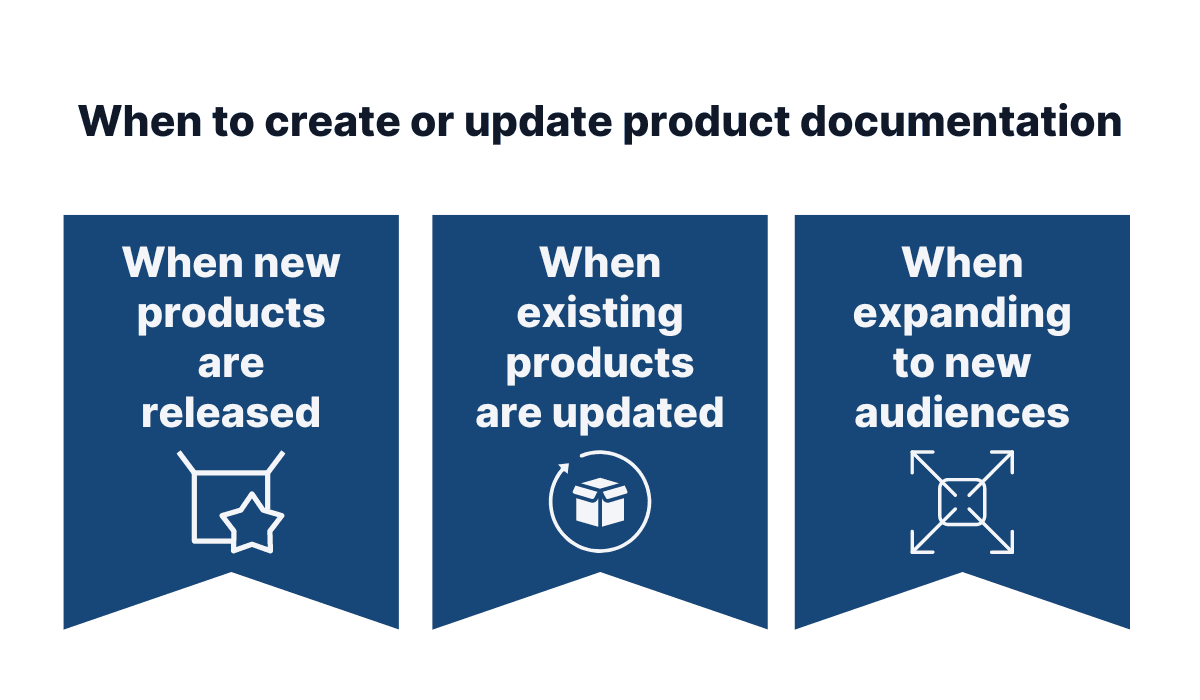
Source: Archbee
Whenever any of these incidents occur, your immediate next step should be reworking your product documentation to reflect these changes.
That way, you ensure accurate, up-to-date, and accessible product documentation for all your readers.
What Is a Knowledge Base
If you encounter issues while using third-party software, your best bet is to examine their knowledge base.
A helpful repository of articles, users can consult knowledge base texts to answer their questions and clear up ambiguities regarding the software.
The documents in a knowledge base address the users’ frequently asked questions and provide solutions to the most common issues.
They focus on problem-solving, often incorporating workarounds or troubleshooting options.
Therefore, a knowledge base is often used as a self-service portal. Users can browse self-help articles instead of contacting Customer Support.
This is a huge asset, as studies have shown how much users prefer knowledge bases:
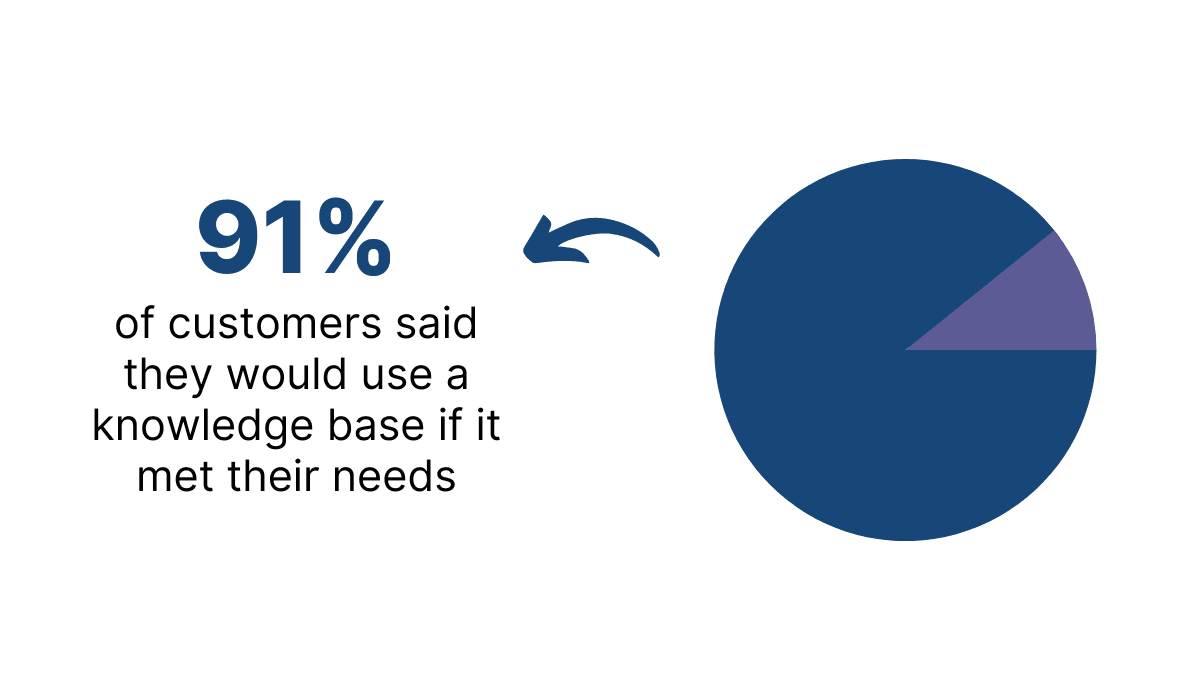
Illustration: Archbee / Source: Zendesk
If a knowledge base is detailed enough, users will gladly utilize the self-help articles. It’s easy to understand why—unlike emails and phone calls, customers can obtain help immediately.
For example, look at this knowledge base:
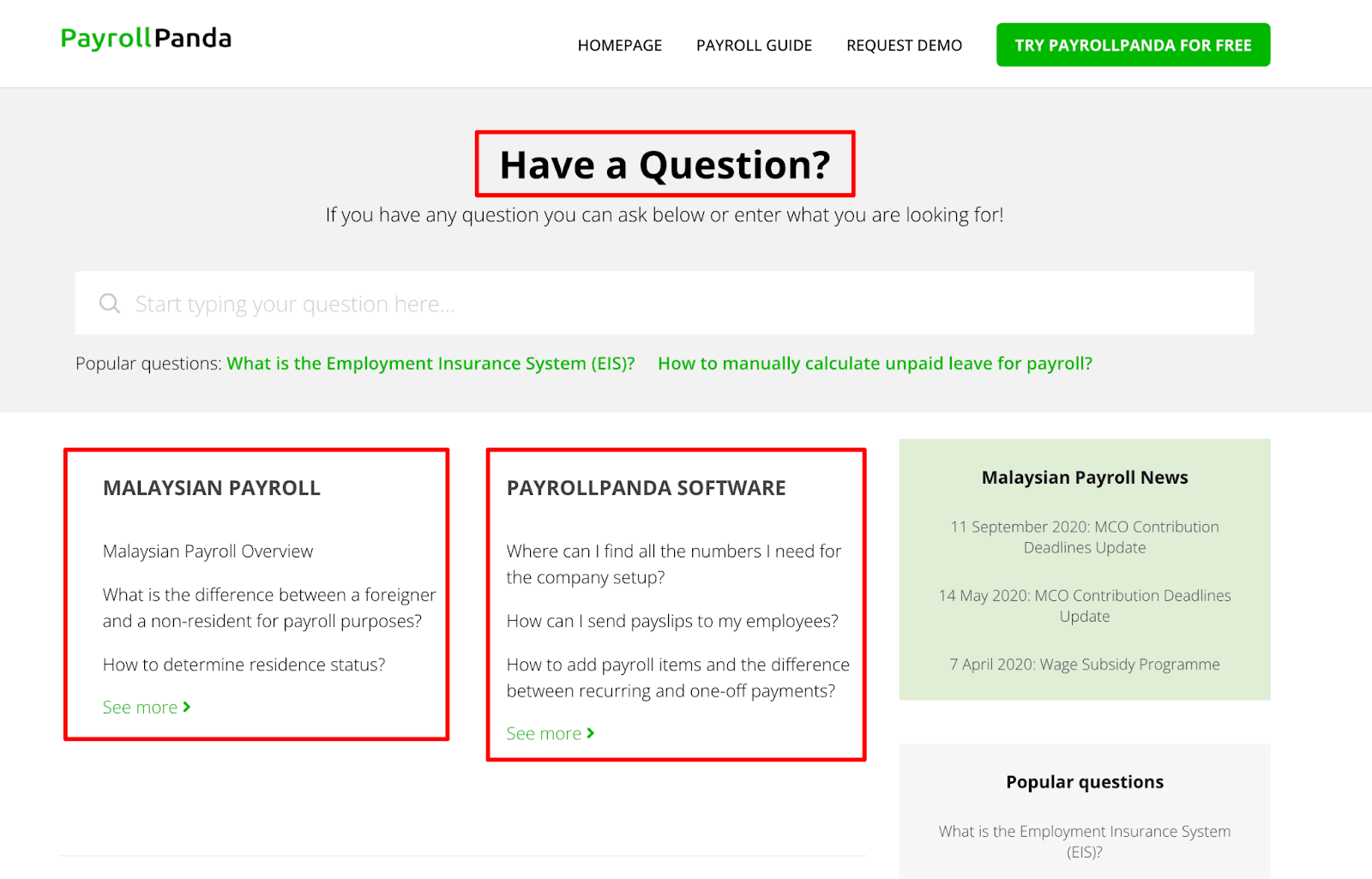
Source: PayrollPanda
Payroll Panda’s entire knowledge base is based on answering questions. The main heading asks if you have a question, and most article titles are also formatted as questions.
This language communicates that the knowledge base is here to help, and users know they can acquire assistance immediately.
However, since knowledge bases often function as a customer service portal, they aren’t as exhaustive as product documentation.
Whereas product documentation is an all-encompassing overview of your software, knowledge bases typically address only the most common user issues.
For reference, knowledge bases usually follow IT’s Pareto Principle, shown below:

Illustration: Archbee / Source: litmos
The above is an often-quoted saying. Most of the time, the majority of users don’t utilize everything the software has to offer.
Consequently, the knowledge base focuses on this 20%—the features that do get regularly used and with which users are most likely to require assistance.
That being said, users aren’t necessarily external. Your employees can also benefit from a knowledge base. After all, it’s an easy method to learn about your company’s systems.
As such, there are two knowledge base types:
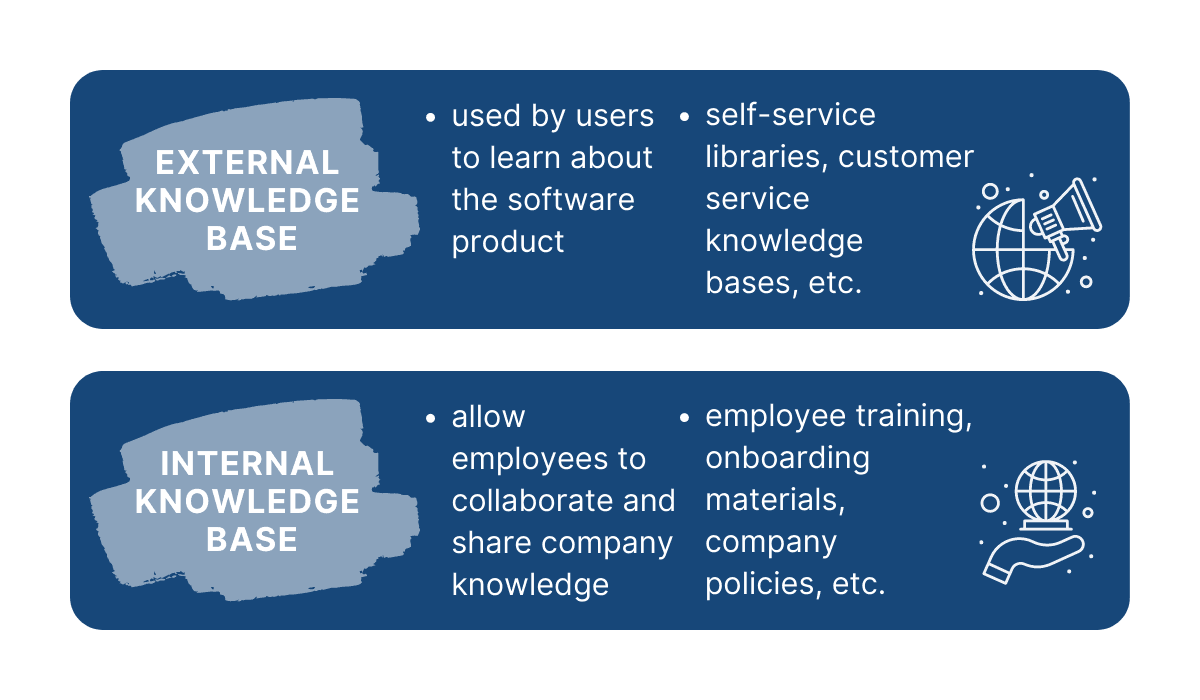
Source: Archbee
The example of PayrollPanda, which we mentioned earlier, is an external knowledge base—a platform end-users employ to better use PayrollPanda’s services.
However, you can also build an internal knowledge base.
This is documentation geared towards your organization’s employees, and constitutes a space for them to share information and learn about the company’s workflows.
For example, here’s an excerpt from GitLab’s internal knowledge base:
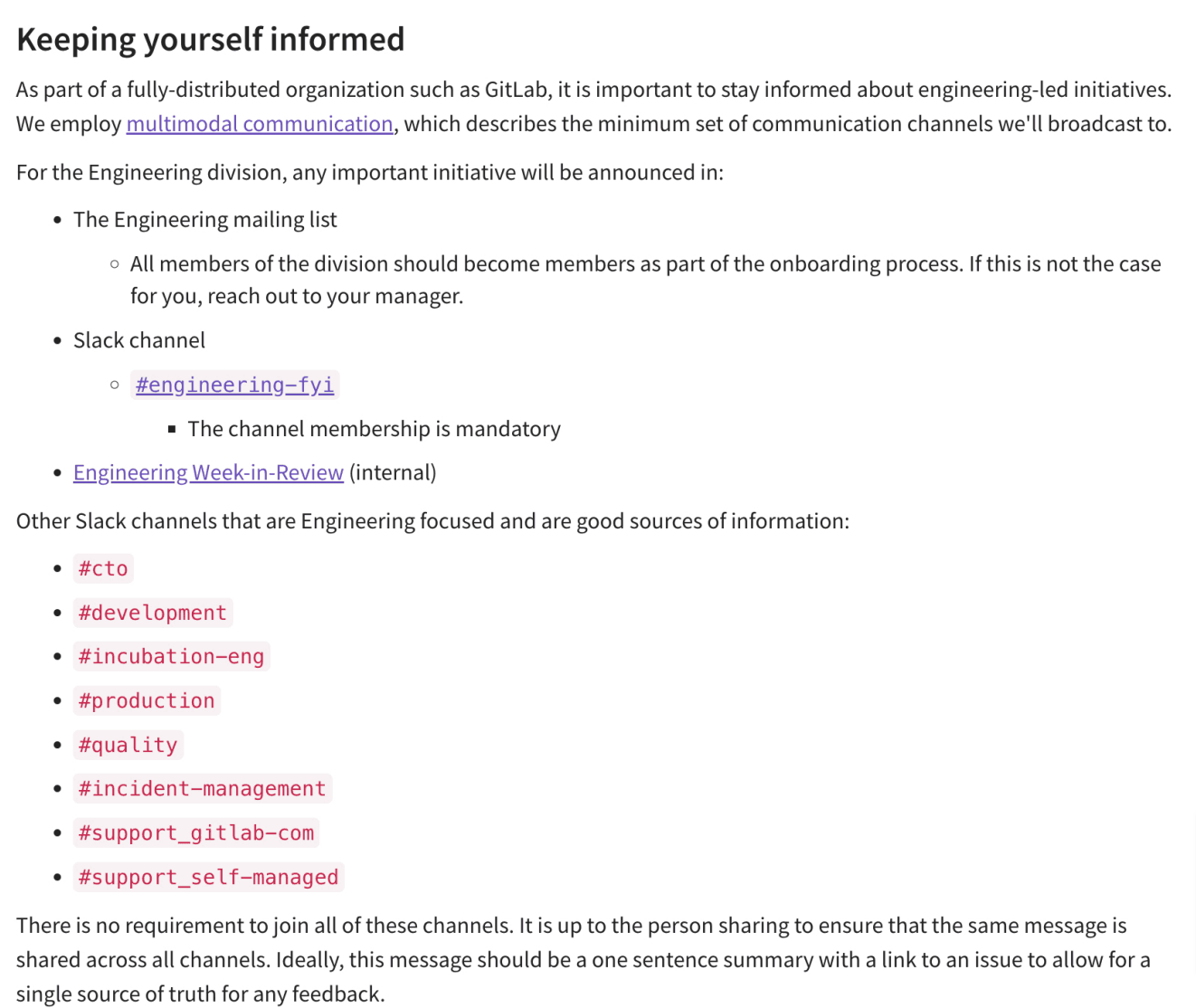
Source: GitLab
This text outlines how employees can stay informed and which communication channels are used for what purpose.
Essentially, the article guides employees on how to use GitLab’s resources to work more efficiently.
With such an internal knowledge base, you can educate your team members on in-house tools and processes—just as you would educate end-users on your software product.
Product Documentation vs. Knowledge Base: Key Differences
At first glance, product documentation and knowledge bases seem incredibly similar. After all, they both offer documents containing software information.
However, the terms can’t be used interchangeably, and there are several key differences between the two.
For starters, product documentation focuses on recording every software feature regardless of its importance. Nothing is ignored, and each aspect of the software is given due attention.
A good example is Microsoft’s article on their Phone System:
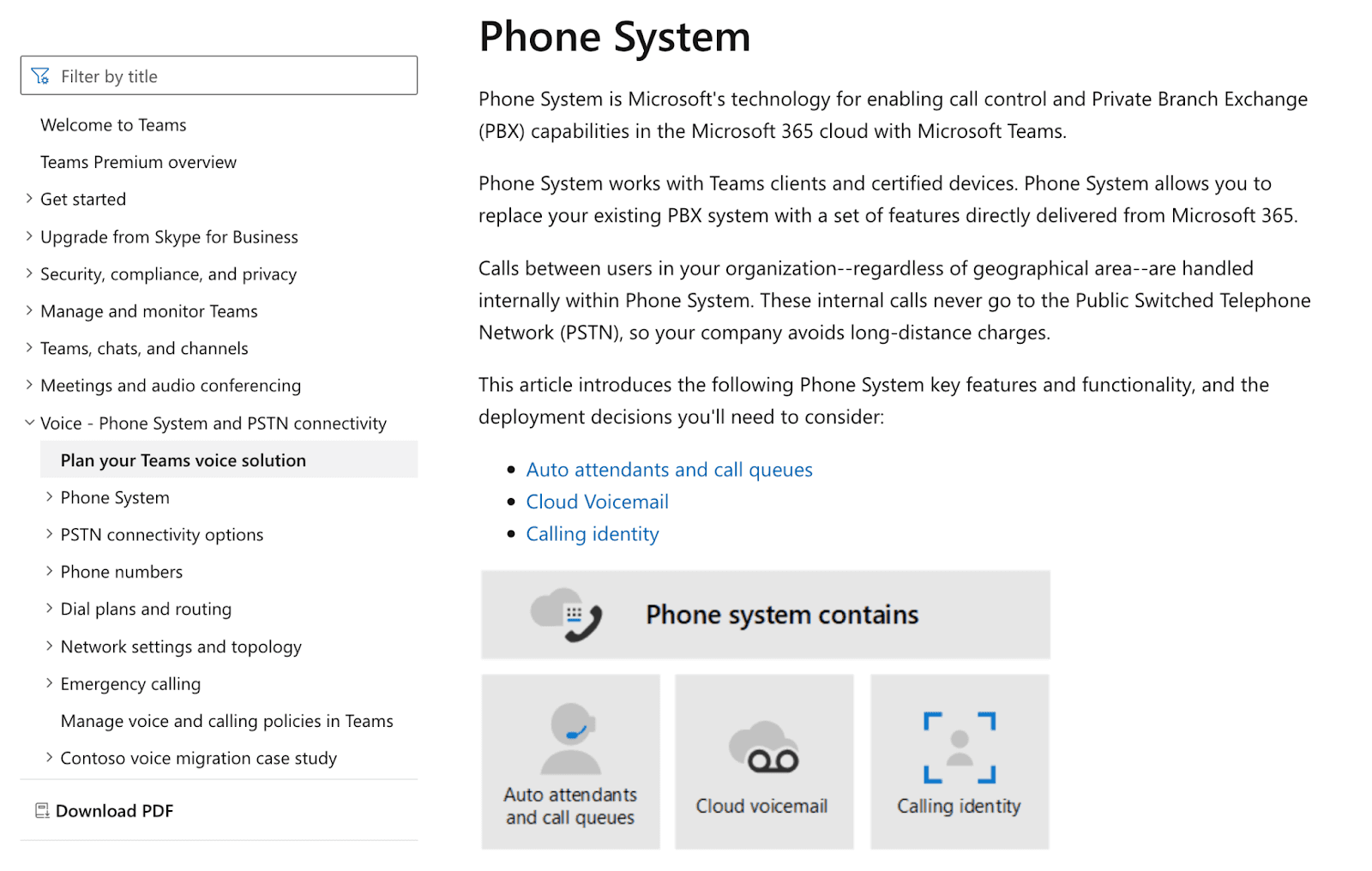
Source: Microsoft
This article contains everything users need to know about the Phone System.
The text provides a comprehensive software overview, explaining all its technical aspects, services, and configuration details.
Knowledge base articles, on the other hand, aren’t as detailed. Instead, they focus on the users’ pain points, solving problems, and clarifying uncertainties.
For example, here are Valant’s instructions on using Easy Nav:

Source: Valant
The text has a clear goal: educating users on how to use Easy Nav. There are no additional details regarding access, configuration, or other technicalities.
In place of that, users receive easily-digestible Easy Nav instructions designed to facilitate use.
As such, the content in product documentation and knowledge bases often differs.
Product documentation is more technical and proactive, whereas knowledge bases are user-orientated and reactive.
Because of this, each kind of repository contains certain typical documentation types.
Here’s a brief overview:

Source: Archbee
Product documentation focuses more on technicalities and has a comprehensive, all-inclusive scope.
Knowledge base articles, on the other hand, are geared towards problem-solving, providing solutions, and answering specific inquiries. Their topics aren’t as specialized.
For this reason, technical writers are typically the authors behind knowledge bases.
Technical writers are well-versed in software’s capabilities and can translate these concepts into an easily-digestible format.
Furthermore, the content isn’t so technical that it’s beyond their expertise.
However, not all technical writers can write product documentation independently.
Since the information there is so specialized, SMEs often assist with composing product documentation, contributing their unique insights.
Ellen Perrine, the Vice President of AOC Key Solutions, elaborated on why:
A technical writer is really somebody that has general knowledge about the business, but he lacks the specifics of your particular business or your particular technical solution. A subject matter expert or SME, on the other hand, he probably works within the client company or maybe a subcontractor company and he can answer questions about the what and the how.
Technical writers usually possess general knowledge adequate for knowledge base articles but aren’t quite so well-versed in technical matters as to compose product documentation.
For that, the expertise of a subject matter expert is necessary.
This difference in authorship, and all other key differences, are listed here:
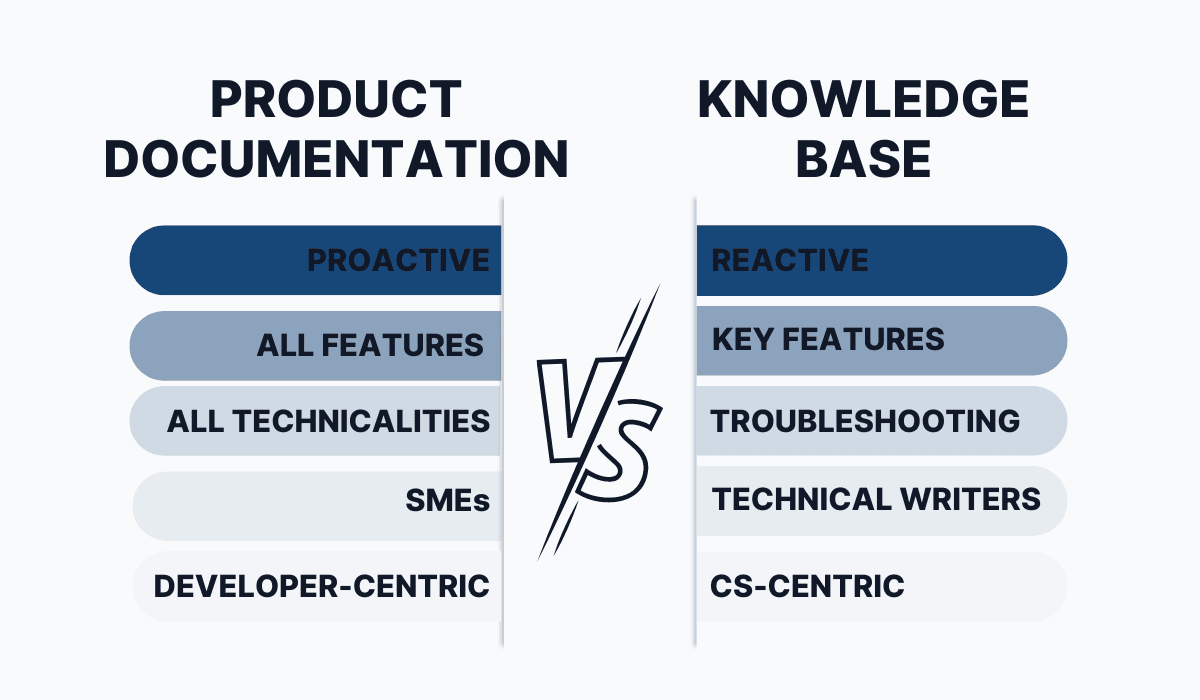
Source: Archbee
Knowledge base articles are centered around common issues, making them a reactive resource for users to alleviate their problems. They’re a massive help to customer service teams.
Product documentation, on the other hand, consists of proactive texts covering all technicalities. Consequently, they’re most often used by developers.
Although both repositories are great software resources, the information type and format differ significantly.
Don’t mistake your knowledge base for product documentation or vice versa—they’re not the same.
Product Documentation vs. Knowledge Base: Do You Need Both
Product documentation and knowledge base articles are both forms of software documentation.
Although they’re different, these two variants contribute to the software product, each in its own way.
Eric Holscher, the co-founder of Write the Docs, has emphasized the importance of software documentation, stating:
Documentation is one of the most important parts of a software project. However, a lot of projects have little or no documentation to help their (potential) users use the software.
By providing both product documentation and knowledge base articles, you’ll make everyone’s lives easier.
Your technical audience can immediately locate the specifications they require, whereas your end-users will quickly find the answers they need.
Instead of exploring the software themselves or contacting Customer Support, they’ll be able to help themselves with just a few clicks.
In other words, there are no information silos in your company, and readers can freely access the information they require.
This systematic approach of collecting, storing, and learning knowledge is called knowledge sharing—an effortless information transfer between individuals.
The graph below will detail the entire knowledge-sharing process:
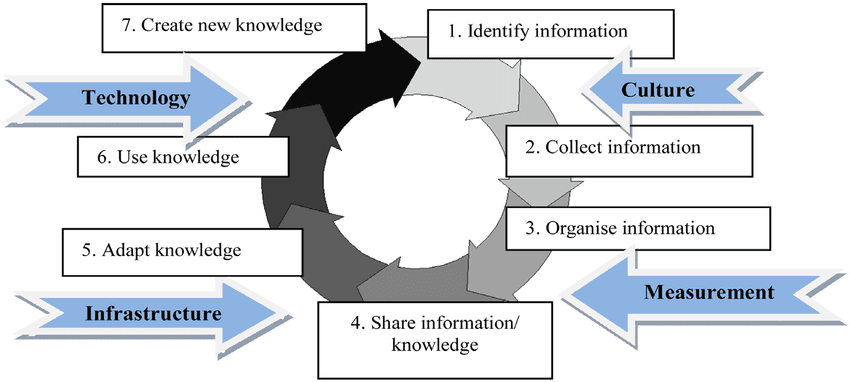
Source: ResearchGate
Steps 2 and 3 are marked Collect and Organize information. This is where product documentation and knowledge bases come in.
You’ll significantly increase your organization’s knowledge-sharing capabilities with two comprehensive, well-structured repositories.
As mentioned before, your users will not need to hunt down data and solutions themselves. Instead, the information will be instantaneously accessible.
As a result, productivity should skyrocket, and workflows will likely become much more efficient.
By offering product documentation and knowledge bases, users won’t lose time tracking down intelligence and can devote themselves more to their tasks.
There are even numbers to prove how beneficial such repositories can be:
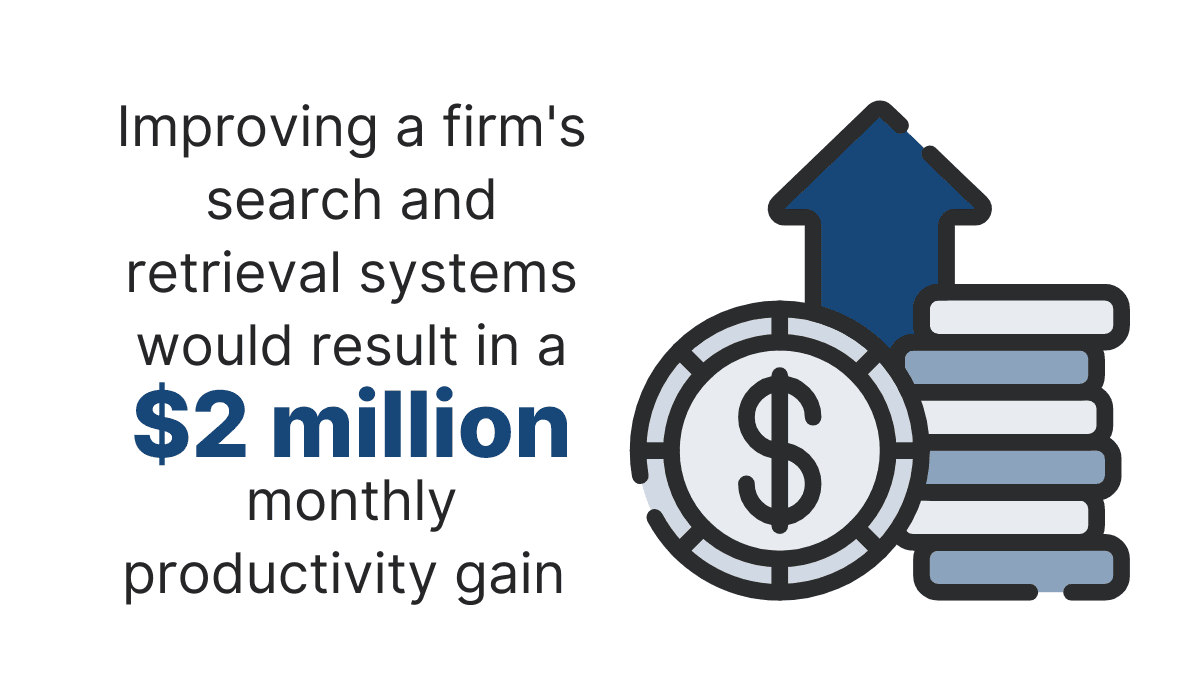
Illustration: Archbee / Source: IDC
Simply upgrading a search and retrieval system is effective enough to save $2 million a month for a large company.
Imagine having fully-implemented product documentation and knowledge base articles; your savings and productivity would be through the roof.
So, the question is: how to implement product documentation and a knowledge base? What’s the best course of action?
Well, you can’t go wrong with a documentation platform, since these resources are created to host all of your documentation needs.
For example, consider Archbee. This tool is designed for multiple use cases, including product documentation, API documentation, knowledge base articles, and more.
Here’s a preview:

Source: Archbee
The resource is an excellent solution for any documentation repository, as it’s equipped with helpful features such as a deep search function, a table of contents, etc.
In addition, the tool is even advanced enough to host multiple products (or multiple documentation variants) in one space.
In the image above, the multiple products are User Guide, Demo Docs, and so on.
However, these categories are also easily switched out for Product Documentation and Knowledge Base—both essential resources for any software company.
Conclusion
Product documentation and knowledge bases perform the same essential function: providing information on a software product. However, that’s pretty much where the similarities end.
Whereas product documentation is a comprehensive repository, offering technical intelligence on every software feature, a knowledge base focuses on the software’s most essential aspects and tries to alleviate frequent user issues.
Despite their differences, the two documentation variants complement each other well and are essential to providing tailored, specialized software intelligence.
You’ll find whatever you need in the product documentation or knowledge base—you just need to know where to look.
Frequently Asked Questions
Product documentation is the authoritative, end-to-end guide to your software. It explains what the product does, how it’s built, and how to use it—from high-level concepts to granular details. It typically covers two audiences: internal teams (system docs like requirements, architecture, code references, test plans, and roadmaps) and end users (user guides, installation and setup, quick starts, troubleshooting, release notes, datasheets). Think of it as the single source of truth that’s kept up to date as the product evolves, so anyone can understand features, configurations, and expected behavior.



